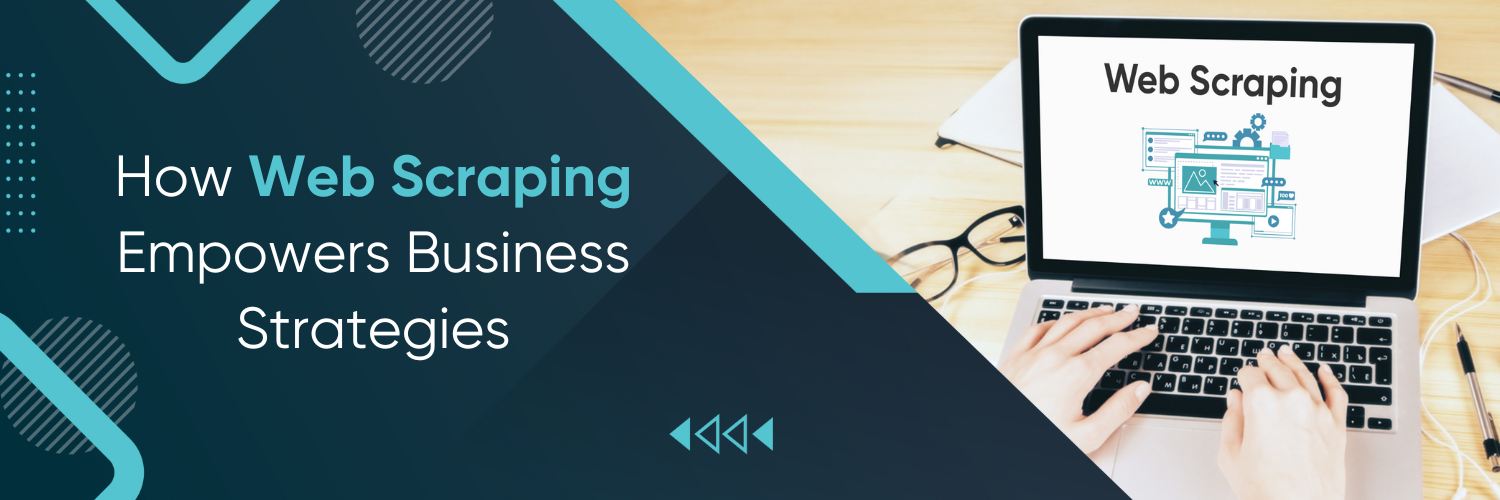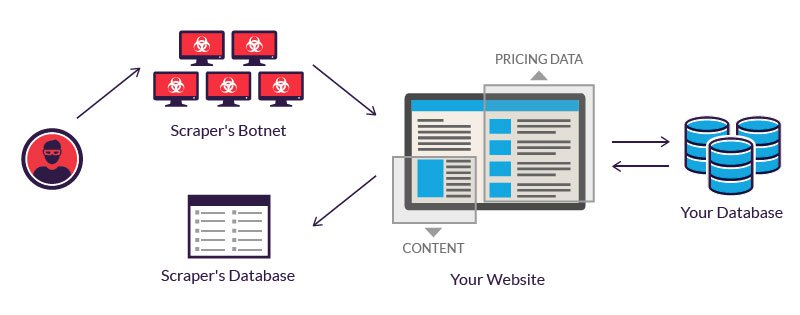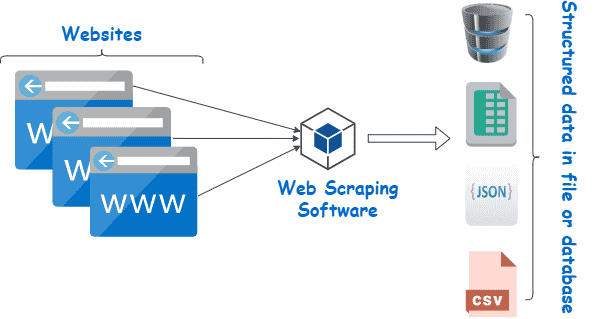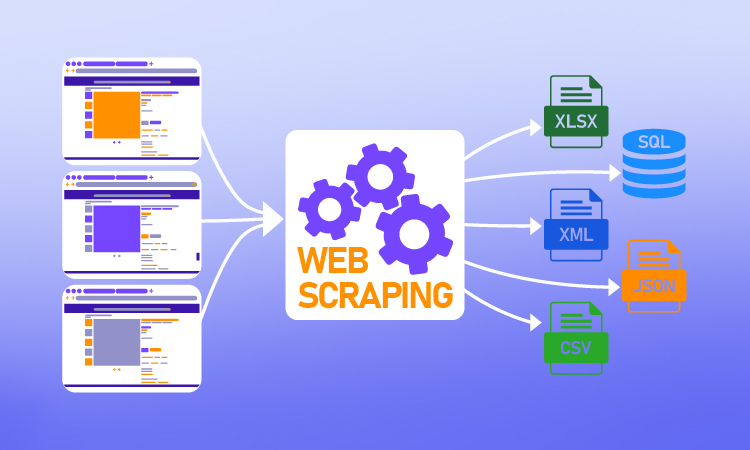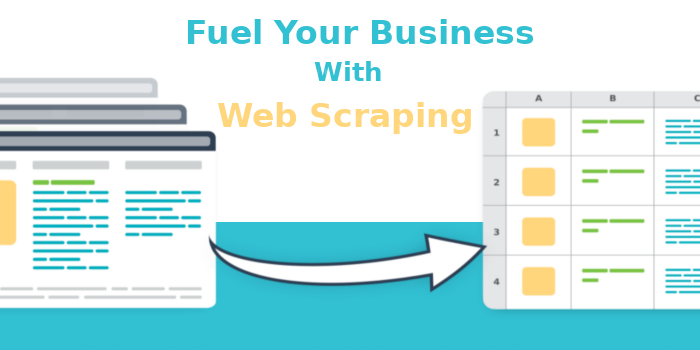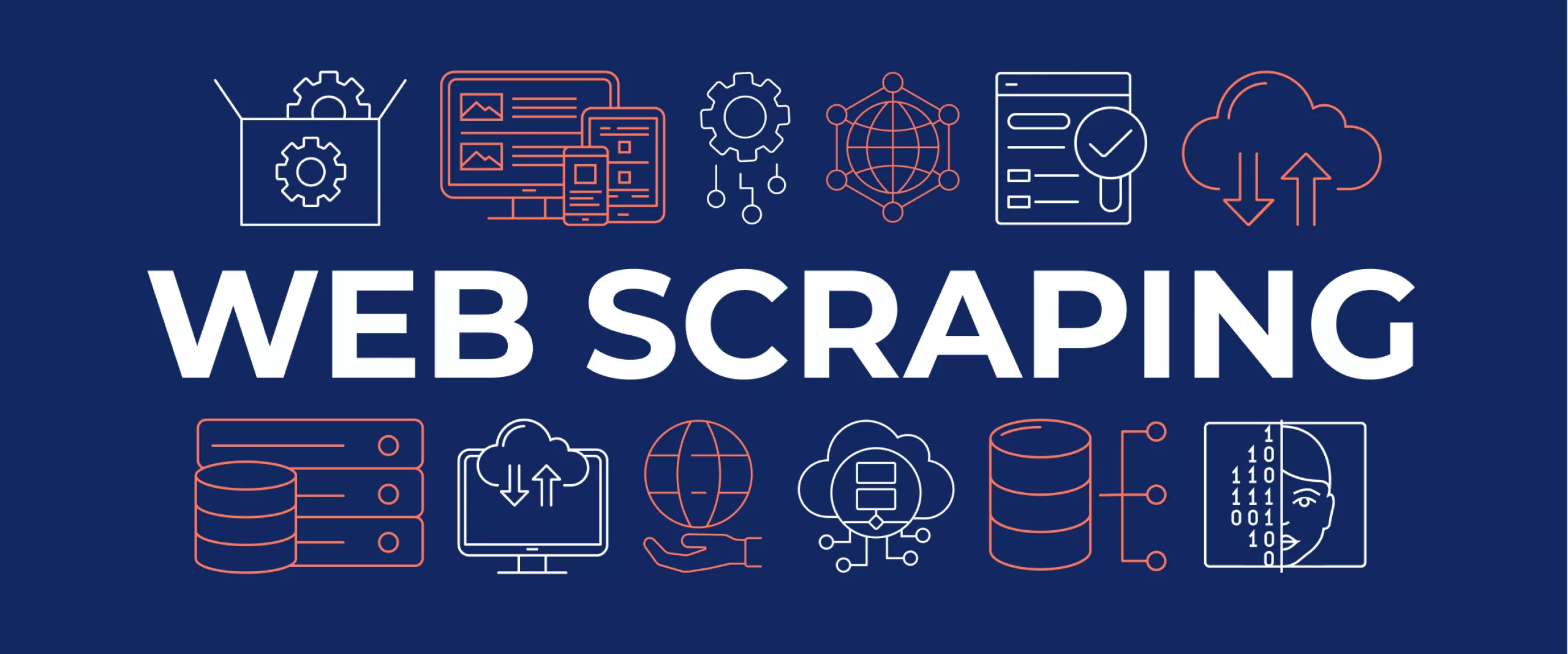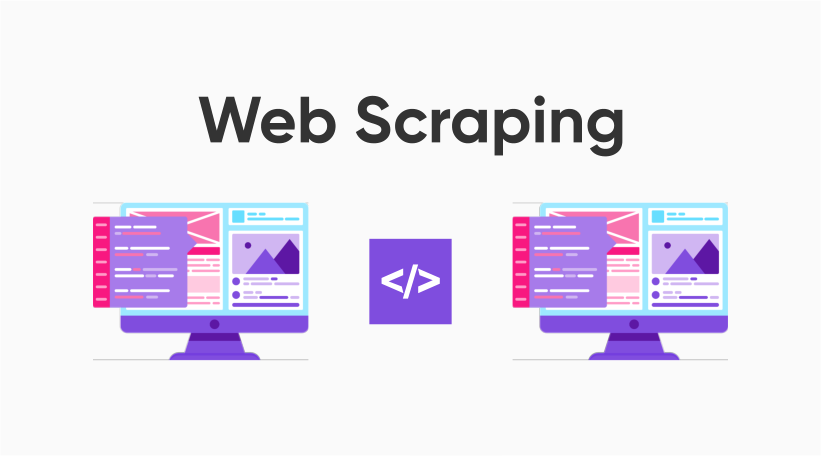The Mechanics of Web Scraping
At its core, web scraping refers to extracting and gathering data from websites. It’s like a virtual data collection, enabling businesses and individuals to gain insights directly from the vast resources of the web. Historically, web scraping started in a rudimentary form, with manual copy-pasting. However, as the digital age advanced and the volume of online data exploded, manual methods proved inefficient. Automated tools emerged, evolving from simple scripts to sophisticated tools and platforms for large-scale and complex data extraction.
Essential Components of Web Scraping
Web scraping is a technique to extract large amounts of data from websites quickly. However, the process is more intricate than just copying and pasting. Here’s a breakdown of the foundational components:
1. Crawlers or Spiders
- Definition: A web crawler, also known as a spider, is an automated script or program that navigates the World Wide Web to collect data from websites.
- Purpose: Its primary role is to fetch web pages and follow links to retrieve as many pages as possible from a particular domain or the entire web.
- How It Works: The crawler begins with a list of URLs to visit, known as seeds. As it visits these URLs, it identifies all the hyperlinks on the page and adds them to its list of URLs.
2. Data Extraction Tools
- Definition: Once the web crawler accesses the relevant web pages, data extraction tools are used to gather specific information from these pages.
- Purpose: To convert unstructured web content, often in HTML, into a structured form, such as a database or spreadsheet.
- How It Works: Using patterns or properties to recognise and extract the desired data.
Common methods include:
- CSS Selectors: Extract data by identifying the CSS path in the web page’s source code.
- XPath: A query language that can be used to extract data by navigating the XML structure of the webpage.
- Regular Expressions: Sequence of characters that forms a search pattern. It can be pretty flexible but requires more technical know-how.
3. Data Processing
- Definition: Data often needs some processing or cleaning once data is extracted.
- Purpose: To ensure data is in a usable and consistent format.
- How It Works: This can involve several tasks:
Removing duplicates
- Correcting typos or inconsistencies
- Converting data types (e.g., strings to numbers or dates)
- Transforming data structure (like JSON to CSV)
4. Data Storage
- Definition: After data processing, the cleaned and structured data needs to be stored for further analysis or application.
- Purpose: To retain and manage the vast amount of extracted data in an organised manner.
- How It Works: Depending on the scale and purpose of the scraping operation, data can be stored in:
- Flat Files: Like CSV or Excel spreadsheets. Suitable for smaller datasets.
- Databases: SQL databases (like MySQL or PostgreSQL) or NoSQL databases (like MongoDB). Useful for larger datasets that require relational data structures.
- Cloud Storage: Platforms like AWS S3 or Google Cloud Storage can be used for large-scale operations, primarily if the data will be accessed across different locations or platforms.
5. Legal and Ethical Considerations
Web scraping, while potent, isn’t without its nuances:
- Ensuring data privacy: Always prioritise user privacy. Personal data, especially without consent, is a strict no-no for scraping. Adhering to GDPR and other privacy laws is essential.
- Respecting robots.txt and terms of service: Most websites have a robots.txt file guiding what can be scraped. Overlooking this might lead to legal consequences.
- Ethical considerations: While you might have access to vast data, always consider its ethical implications. Unfair advantages or misrepresentation can tarnish your business reputation.
Web Scraping and Business Strategy: The Connection
Real-time Market Analysis
Web scraping is the silent recon officer for businesses:
- Tracking competitors’ prices: Stay updated on market pricing strategies. Automated scrapers can monitor competitors’ product prices, helping devise competitive pricing strategies.
- Monitoring stock and availability: Gauge product availability trends across competitors and capitalise on market gaps.
- Understanding market trends and shifts: By analysing aggregated data, identify trending products, services, or market shifts.
Lead Generation and Marketing
Harnessing web data can supercharge marketing:
- Identifying potential clients: Extract contact data from directories or industry-specific sites.
- Personalised marketing campaigns: Use insights to tailor campaigns that resonate with target demographics.
- Enhancing SEO and content strategies: Identify keywords or trends to boost SEO and create resonant content.
Data-driven Decision Making
Data is the cornerstone of sound decisions:
- Providing insights for product development: Recognise market needs by analysing customer reviews, feedback, and popular products.
- Optimising pricing strategies: Adapt pricing based on market demand, competitor pricing, or other economic factors.
- Enhancing supply chain and logistics: Understand market logistics by studying shipping, delivery trends, or supplier data.
Advantages of Incorporating Web Scraping into Business
Incorporating web scraping into business operations can offer many benefits, allowing companies to extract, analyse, and leverage data to make informed decisions. Here are some primary advantages:
1. Data-driven Decision Making
- Web scraping provides a robust foundation for businesses to make decisions rooted in concrete data rather than intuition. Data can guide strategy and reduce risk from product launches to market expansions.
2. Competitive Analysis
- By scraping data from competitor websites, businesses can gain insights into their product offerings, pricing strategies, and marketing campaigns, allowing them to anticipate market moves and position themselves effectively.
3. Real-time Insights
- In industries where prices fluctuate frequently, like stock markets or e-commerce, web scraping can provide real-time data, allowing businesses to adapt rapidly to market conditions.
4. Enhanced Customer Understanding
- Companies can glean insights into customer preferences, pain points, and expectations by analysing reviews, feedback, and online discussions, fostering product development and customer service improvements.
5. Lead Generation
- Web scraping tools can extract contact details from directories, forums, or professional networking sites, offering a cost-effective method for lead generation and expansion of business networks.
6. SEO Optimisation
- By scraping data on search engine results for specific keywords, businesses can understand their SEO standings and refine their content strategies to improve organic search rankings.
7. Automated Data Entry
- For businesses relying on regular updates from external sources, web scraping can automate data entry tasks, ensure timely data accuracy, and reduce manual input errors.
8. Market Trend Analysis
- By regularly scraping data from various sources, businesses can spot market trends, anticipate demand, and identify potential growth areas.
9. Cost-effective Research
- Conducting primary market research can be costly and time-consuming. On the other hand, web scraping offers a more economical way to gather vast amounts of data in a relatively shorter time.
10. Supply Chain Optimisation
Businesses can scrape data related to product availability, lead times, and shipping costs, enabling them to optimise their supply chains and ensure timely product delivery.
- Content Aggregation: For businesses that rely on content curation (like news websites or market analysis platforms), web scraping tools can automate content aggregation, ensuring fresh content is consistently available to users.
- Customisation and Personalisation: Businesses can offer personalised experiences, product recommendations, and targeted marketing campaigns by understanding their platforms’ behaviour, preferences, and browsing patterns.
Giving Businesses a Competitive Edge
Web data keeps businesses on their toes:
- Staying ahead of market trends: By continuously updating market data, businesses can predict and jump on trends before competitors.
- Adapting rapidly to market changes: Immediate data access enables businesses to pivot strategies swiftly.
Enabling Proactive Response to Customer Needs
Listen to the digital pulse of customers:
- Analysing customer feedback and reviews: Gauge sentiment and improve products/services to enhance product quality based on real-time data—iterate products using customer reviews and feedback.
Efficient and Economical Data Gathering
Cut down on traditional research.
- Reducing the need for manual data collection: Automated scraping saves time and resources.
- Ensuring data accuracy and up-to-date information: Regularly provides the freshest data.
Common Challenges and How to Overcome Them
Technical Hurdles
Scraping isn’t always straightforward:
- Handling dynamic web pages: Consider using tools like Selenium for AJAX-loaded content.
- Dealing with CAPTCHAs and anti-scraping measures: Implement delays between requests or rotate IP addresses.
Data Relevance and Quality
Ensure you’re collecting gems, not just stones:
- Filtering out noise and irrelevant data: Implement precise selectors or criteria for data extraction.
- Ensuring regular updates for time-sensitive information: Schedule scraping tasks at regular intervals.
Storage and Data Management
Handle the data avalanche:
- Organising large volumes of data: Consider database systems or cloud storage for scalability.
- Integration of scraped data into existing databases: Use ETL (Extract, Transform, Load) tools or custom scripts.
Conclusion
Web scraping has undeniably become a linchpin in the mechanics of contemporary business operations. Its expansive potential, from dissecting competitor strategies to pinpointing emerging market trends, renders it an essential tool for today’s dynamic business environment. As we journey into the data-centric era, the call to action for businesses is clear: harness the power of web scraping, but do so with responsibility, integrity, and foresight.
If you want to elevate your business’s data strategies and solidify its market standing, partnering with experts is the key. Ubique Digital Solutions is a beacon in this domain, ready to guide your business toward unparalleled success. Don’t just adapt; thrive. Follow and partner with Ubique Digital Solutions to supercharge your business trajectory.
FAQs
Q: What Tools and Platforms Are Recommended for Web Scraping?
Tools like Beautiful Sop Scrapy and platforms like Octoparse and Hexomatic can be used for web scraping.
Q: How Often Should I Scrape Data for My Business?
It depends on your business needs; for real-time data like stock prices, you might need hourly updates, while other data types might need weekly or monthly scrapes.
Q: Can Web Scraping Be Applied to Any Website?
Technically, yes. But always consider a site’s robots.txt and terms of service to ensure legality.
Q: What Are the Potential Legal Implications of Web Scraping?
This depends on jurisdictions and specific websites’ terms. Violations can lead to lawsuits or bans.
Q: How Do I Ensure the Accuracy of Scraped Data?
Regularly audit and verify data, set specific criteria for scraping, and choose reliable sources.
